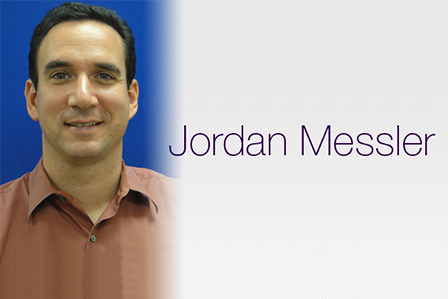Fall means football. Even in Florida where it’s still 90 degrees, we can pretend autumn has arrived, with football on the lawn as a rite of passage. Recently, I was in the front yard playing with my 2 daughters, 7 and 9 years old. We decided to play some 2 on 2, with myself as automatic quarterback, just like the good ole days of backyard football. (Although as a kid there were always fights on who would be QB. I often lost. One of the benefits of being a Dad, I just tell them I’m automatic QB and no one argues. “…because I said so.”)
Shayna, the older one, and I drew up a play on her shirt, tracing it out with my finger, hidden from the eyes of the youngest, Lyla. We created some complicated play with a little razzle-dazzle, some goofy faces to distract the opponent, and then a run down the sideline. Meanwhile, Lyla also huddled up, she walked over to a nearby bush and stated she and her little tree friend, Fred, were considering their defensive scheme. We gave her a funny look and then unleashed our play, which went horribly awry, but left everyone on the ground laughing.
Lyla’s team took over on offense, and I walked to her side to help with the QB duties. She turned me away, and stated she’s got her teammate, Fred; she’s fine. I didn’t put up an argument, and Shayna and I took on Lyla and Fred. Lyla huddled with Fred, discussed some secret route, hiked the ball to herself, and then prepared a deep throw. The ball was launched high into the air, near the end zone, and landed. With a perfect thud on the driveway. Incomplete pass.
Fred’s not such a great teammate after all, we told her. “Must have butter fingers.”
That reminded me of where else I’ve seen Fred. In the hallways of our hospital. We often walk into situations where our lack of clear communication with staff and patients seems as effective as playing football with an imaginary teammate.
We place an order for a “now” heparin drip in the computer, or stat labs, or a discharge order, and then we check back two to three hours later, and see our orders interpreted as suggestions, they are not carried out. An incomplete pass. A healthcare fumble. Talking to a computer, writing orders in the chart, missing the face time with our front-line staff has created a team full of imaginary Freds. Even when we review a care plan clearly to patients – let them know about the discharge plans later today and that there is no more need for that CT after all – we omit telling the nurse. We have excuses: the nurse wasn’t available, they didn’t answer the phone, etc. Then the patient dresses to leave and the nurse walks in with a bottle of CT contrast and confusion.
We don’t talk to each other. Nurses who used to see us gather around the paper chart in front of the patients’ rooms had us cornered for at least a few minutes to find us and talk with us. Now, we are hidden away in secret rooms. We could be writing orders anywhere these days, on the unit, in our hospitalist office two buildings away, or on the beach after hours. (Which, don’t get me wrong, is a pretty relaxing and modern way to enter orders for a patient).
But these are not real communications. We don’t get to know the staff; we don’t understand the culture of a unit; we don’t leave the day with everyone on the same game plan. We are the opposite of a team. Plays are drawn up for our patients without effective communication to the people that need to hear them.
2009, Lucian Leape wrote about transforming healthcare. His summation of the steps were to enable healthcare workers to work in teams, find joy and meaning in work, become transparent about the care, and develop a patient-centered approach. These elements and more can root themselves deeply when high quality bedside rounds are implemented.
In 2013, we set out to change our system of care and incorporate some of those elements. We implemented a team-based rounding model based on Jason Stein’s Structured Interdisciplinary Bedside Rounds(SIBR).
We had a patient at the center of our daily conversation, clear roles for the participants, a high quality safety checklist, and a model that flattened the hierarchy. We worked as a team. We were on a first name basis with everyone and we were providing high quality care with real time interventions. This was the model that redesigned the system. We went from 10% of our hospitalists meeting with nursing daily, to 100% on the unit. They had to now, it was part of our daily rounds, every day.
This month, I’ll share the SIBR model at a precourse at SHM’s Southern Regional Conference, in New Orleans. A little late to sign up, but never too late to talk about how to break the model, run a new playbook. The model is now being demonstrated in numerous hospitals around the country and the globe. It’s transforming care and raising the standard for teamwork in the hospital. There are other models of teamwork. There are many ways to provide the effective communication that we know is essential for safe, patient-centered care in the hospital. Leadership should be asking for it, and we should be providing it.
Lyla tells me Fred is a pretty funny guy, but she admits he’s not such a good teammate. Maybe I’ll let her be automatic QB next time, and I’ll be her teammate.
Go team!
BTW….Lyla’s imaginary Fred has been a friend on and off for years. I was writing up this story at the bookstore and on the way out I see this recent book.
Imaginary Fred percolates in many imaginations. Wild.



Leave A Comment